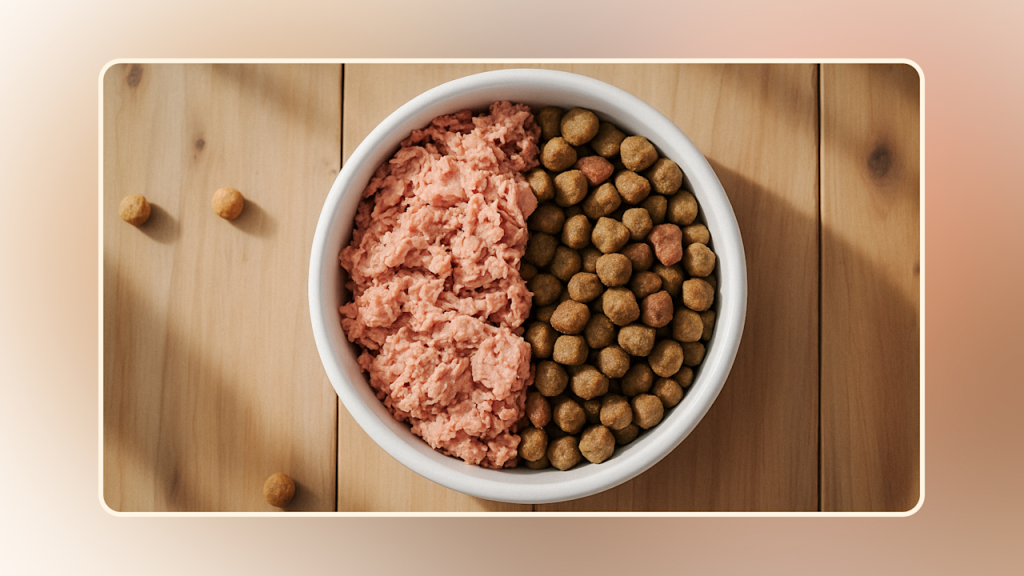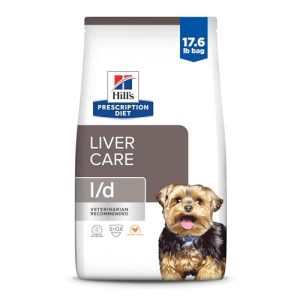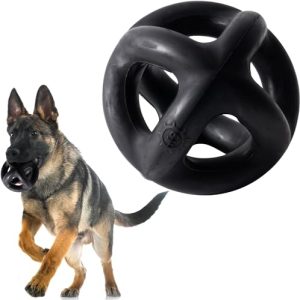Imagine giving your dog a meal that’s not just tasty, but also packed with the nutrients they need to thrive. If you’re curious about crafting a raw food diet for your furry friend, you’re in the right place.
You might be wondering if this is the best choice for your pet or how to get started without feeling overwhelmed. The good news is, creating a raw food diet is simpler than you might think, and it can lead to a happier, healthier dog.
By the end of this article, you’ll have all the tools and knowledge you need to confidently make this beneficial change to your dog’s diet. Let’s explore how you can provide the best nutrition for your canine companion.
Benefits Of A Raw Food Diet
Feeding your dog a raw food diet can improve its health in many ways. Raw diets include fresh meats, bones, and vegetables. These natural ingredients help dogs thrive and feel better.
This diet is closer to what dogs ate before they were pets. It supports their body functions and can lead to visible improvements.
Improved Digestion
Raw food is easier for many dogs to digest. It contains natural enzymes that help break down food. This can reduce stomach upset and gas.
Many dog owners notice firmer stools and less diarrhea when switching to raw food. Proper digestion also means better nutrient absorption.
Healthier Coat And Skin
A raw food diet provides essential fatty acids and vitamins. These help keep your dog’s skin soft and their coat shiny.
- Omega-3 and Omega-6 fats reduce itching
- Natural oils improve fur texture
- Vitamins support skin repair and hydration
Increased Energy Levels
Raw foods offer high-quality protein and nutrients. These give dogs more energy for play and exercise. Many dogs seem more lively and active.
| Energy Source | Benefit |
| Raw Meat | High protein for muscle strength |
| Vegetables | Vitamins for metabolism |
| Healthy Fats | Long-lasting energy |
Better Dental Health
Chewing raw bones helps clean your dog’s teeth. It reduces plaque and tartar buildup. This supports healthier gums and fresher breath.
Raw food diets encourage natural chewing behavior:
- Strengthen jaw muscles
- Reduce risk of dental disease
- Keep teeth white and strong
Essential Ingredients For Raw Meals
Feeding your dog a raw food diet needs careful planning. You must include the right ingredients. This helps your dog stay healthy and happy.
Each ingredient group adds important nutrients. Learn about the main parts to add to your dog’s meals.
Meat And Protein Sources
Meat is the main part of a raw diet. It provides protein and energy. Choose fresh and good quality meats.
- Chicken (breast, thigh, ground)
- Beef (muscle meat and ground)
- Lamb (cuts and ground)
- Turkey (breast and thigh)
- Fish (salmon, sardines, mackerel)
Organ Meats
Organs have vitamins and minerals. They are needed in smaller amounts but are very important.
| Organ | Key Nutrients |
| Liver | Vitamin A, Iron |
| Kidneys | Vitamin B12, Protein |
| Heart | CoQ10, Taurine |
| Spleen | Iron, Zinc |
Bones And Calcium
Raw bones give calcium and help keep teeth clean. Use only raw, not cooked bones. Cooked bones can break and hurt your dog.
- Chicken necks and wings
- Turkey necks
- Beef rib bones (raw and large)
- Oxtail
Fruits And Vegetables
Fruits and vegetables add fiber, vitamins, and antioxidants. Not all are safe, so choose carefully.
| Safe Fruits | Safe Vegetables |
|---|---|
| Blueberries | Carrots |
| Apple (no seeds) | Spinach |
| Pear (no seeds) | Green beans |
| Watermelon (no seeds) | Broccoli |
Balancing Nutrients
A raw food diet for dogs needs the right balance of nutrients. This helps your dog stay healthy and active.
Knowing what nutrients to include is key. It keeps your dog strong and happy.
Protein To Fat Ratios
Protein and fat give your dog energy and help build muscles. A good ratio supports overall health.
For most dogs, aim for about 80% protein and 20% fat in their diet. This ratio can change based on your dog’s age and activity level.
- Active dogs may need more fat for energy.
- Older dogs might need less fat and more protein.
- Balance helps avoid weight gain or loss.
Vitamins And Minerals
Vitamins and minerals keep your dog’s body working well. They support bones, skin, and the immune system.
Include foods rich in calcium, phosphorus, zinc, and vitamins A, D, and E. These nutrients help your dog grow and stay strong.
- Calcium and phosphorus support healthy bones.
- Zinc helps with skin and coat health.
- Vitamin A supports vision and immunity.
- Vitamin D helps absorb calcium.
- Vitamin E protects cells from damage.
Supplements To Consider
Sometimes raw food alone does not provide all nutrients. Adding supplements can fill these gaps.
Common supplements include fish oil, probiotics, and kelp powder. These help with digestion, skin health, and nutrient balance.
- Fish oil adds omega-3 fatty acids for skin and joints.
- Probiotics improve gut health and digestion.
- Kelp powder provides extra minerals and vitamins.
- Bone meal adds calcium if raw bones are not given.

Credit: www.k9sovercoffee.com
Preparing Raw Food Safely
Feeding your dog a raw food diet can be healthy if done correctly. Safety is important to avoid illness. This guide helps you prepare raw food safely for your dog.
Learn how to select good ingredients, store them right, and keep the food clean. These steps protect your dog’s health.
Selecting Quality Ingredients
Choose fresh and high-quality ingredients to make sure your dog gets proper nutrition. Avoid old or spoiled items.
- Pick fresh meats from trusted sources
- Choose organic vegetables when possible
- Use fresh fruits that are safe for dogs
- Check expiration dates on all products
- Avoid processed or seasoned foods
Proper Storage And Handling
Store raw food in clean containers and keep it cold. Proper storage stops bacteria from growing and keeps food fresh longer.
| Storage Method | Recommended Temperature | Duration |
| Refrigerator | Below 40°F (4°C) | 1-2 days |
| Freezer | Below 0°F (-18°C) | Up to 3 months |
| Clean Containers | Use airtight containers | Prevent odor and contamination |
Avoiding Contamination
Keep raw food preparation areas clean. Use separate tools for raw food and wash hands often. These steps stop germs from spreading.
- Wash hands with soap before and after handling raw food
- Use different cutting boards for raw meat and other foods
- Clean all utensils and surfaces with hot soapy water
- Do not reuse containers without washing them
- Keep pets and children away during food prep
Transitioning Your Dog To Raw Diet
Switching your dog to a raw food diet takes time and care. A gradual change helps your dog adjust well.
This guide explains how to introduce raw food safely to keep your dog healthy and happy.
Gradual Introduction
Start by mixing a small amount of raw food with your dog’s current food. Increase the raw food slowly over days.
Change the ratio by adding more raw food and less cooked food every few days. This helps your dog’s digestion adjust.
- Begin with 10% raw food mixed with 90% regular food
- Increase raw food by 10% every 3-4 days
- Watch for signs of discomfort or refusal to eat
- Complete the switch in about 2-3 weeks
Monitoring Reactions
Check how your dog reacts to the new diet daily. Look for changes in energy, appetite, and stool quality.
Some dogs might have mild digestive upset at first. If problems last more than a week, consult your vet.
- Observe for vomiting or diarrhea
- Note any changes in behavior or mood
- Keep track of stool consistency and frequency
- Contact a vet if symptoms worsen or persist
Adjusting Portions
After your dog adapts to raw food, adjust portion sizes based on weight and activity level. Avoid overfeeding.
Use your dog’s body condition as a guide. If your dog gains weight, reduce portions slightly. If losing weight, increase portions.
- Feed 2-3% of your dog’s ideal weight daily
- Divide meals into two or more servings
- Monitor weight every week or two
- Adjust food amounts to keep healthy weight
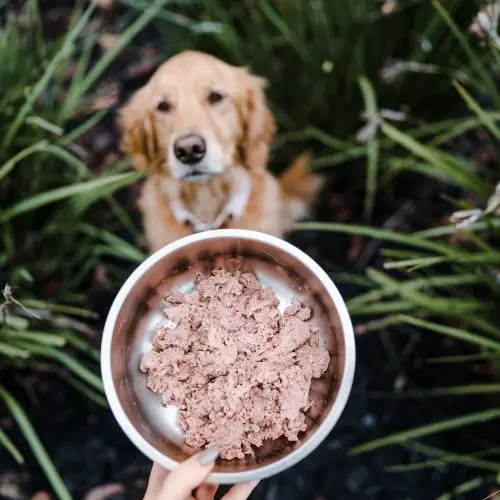
Credit: wefeedraw.com
Common Challenges And Solutions
Feeding your dog a raw food diet can be rewarding but also tricky. You may face some common problems. Understanding these challenges helps you find solutions faster.
This guide covers issues like picky eaters, cost management, and time commitment. It offers practical tips to keep your dog healthy and happy on a raw diet.
Picky Eaters
Some dogs refuse to eat raw food at first. They may dislike new smells or textures. Patience and creativity can help change their minds.
- Mix raw food with a small amount of cooked meat to start.
- Try different proteins like chicken, beef, or fish.
- Add natural flavor enhancers like bone broth or fish oil.
- Serve food at room temperature to improve smell.
- Offer meals at regular times to build a routine.
Cost Management
Raw diets can be expensive. Buying the wrong ingredients or wasting food raises costs. Planning and shopping smart keeps expenses low.
| Tip | Description |
| Buy in Bulk | Purchase large amounts to get discounts and reduce trips. |
| Use Local Sources | Farmers and butchers often offer better prices than stores. |
| Freeze Portions | Store meals in small packs to avoid spoilage and waste. |
| Include Organ Meats | Organs are nutritious and cost less than muscle meat. |
| Track Spending | Keep a budget to adjust your shopping habits as needed. |
Time Commitment
Raw food prep takes more time than buying kibble. You must plan, prepare, and clean up carefully. Organizing your routine saves effort.
- Set one or two days for meal prep each week.
- Use a food processor to chop ingredients quickly.
- Label and date all portions before freezing.
- Clean prep areas right after use to avoid bacteria.
- Keep a checklist for supplies to avoid last-minute trips.
Faqs On Raw Feeding
Many dog owners want to know about raw food diets. Feeding raw can be healthy but needs care.
This FAQ answers common questions about raw feeding for dogs.
Is Raw Diet Safe For All Dogs?
Raw diets can be safe for most dogs. Some dogs need special attention. Puppies, pregnant, or sick dogs may not do well on raw food.
- Talk to a vet before starting raw food.
- Choose fresh, clean ingredients.
- Watch for signs of illness or allergies.
- Keep raw food properly stored and handled.
How To Handle Allergies?
Some dogs may have allergies to raw food items. Identify the problem foods by testing one ingredient at a time.
| Allergy Symptom | Possible Cause | Action |
| Itching or skin rash | Protein from beef or chicken | Switch protein source |
| Digestive upset | Dairy or eggs | Remove dairy and eggs |
| Swelling or hives | New ingredient | Stop new food and consult vet |
Frequency Of Raw Meals
How often to feed raw depends on your dog’s needs. Most dogs eat raw once or twice daily.
- Feed puppies 3-4 times a day.
- Adult dogs usually eat twice a day.
- Older dogs might need smaller, more frequent meals.
- Watch your dog’s weight and energy to adjust portions.
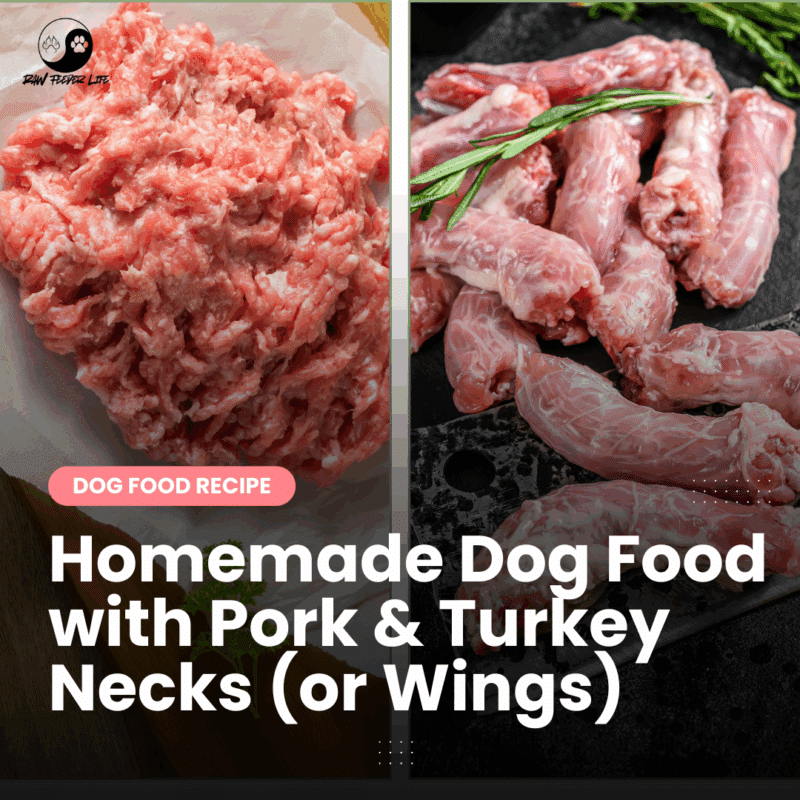
Credit: keepthetailwagging.com
Frequently Asked Questions
What Are The Benefits Of A Raw Food Diet For Dogs?
A raw food diet improves digestion, enhances coat shine, boosts energy, and supports immune health. It provides natural nutrients and avoids fillers found in processed foods, leading to better overall wellness for your dog.
How Do I Safely Prepare Raw Food For My Dog?
Use fresh, high-quality ingredients. Clean all surfaces and utensils thoroughly. Store raw food properly in the fridge or freezer to prevent bacterial growth. Consult your vet to ensure balanced nutrition and avoid harmful pathogens.
Can All Dog Breeds Follow A Raw Food Diet?
Most dog breeds can thrive on raw diets if properly balanced. However, puppies, seniors, or dogs with health issues may need tailored plans. Always consult your veterinarian before switching diets to ensure it suits your dog’s specific needs.
What Essential Nutrients Must Raw Dog Food Include?
Raw dog food should include muscle meat, organ meat, bones, and fresh vegetables. Ensure a balance of protein, fats, vitamins, and minerals. Supplement with omega fatty acids and calcium to support overall health and growth.
Conclusion
Feeding your dog a raw food diet takes time and care. Start slow, watch for any changes in health. Choose fresh, safe ingredients your dog enjoys. Balance proteins, veggies, and supplements carefully. Always consult a vet for guidance and safety.
Raw feeding can support your dog’s health and happiness. Stay patient and observe your dog closely. Small steps lead to a healthy, happy pet.

Emily Barker is the founder of ChillDogLife.com, a space dedicated to helping pup parents discover the best dog products, lifestyle tips, and cozy ideas for happier homes.
A lifelong dog lover, Emily combines her passion for pets with a knack for research to share trusted recommendations on everything from toys and furniture to health and everyday care.
Her goal is simple: to make life easier, stylish, and more joyful for dogs and the people who love them.
